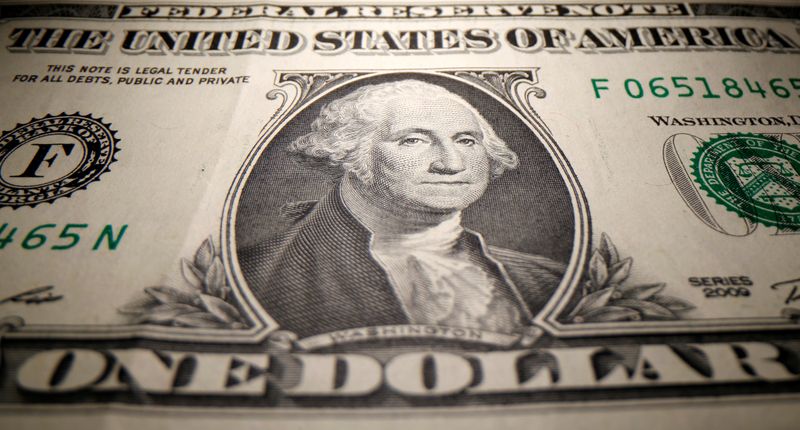By Gertrude Chavez-Dreyfuss and Herbert Lash
NEW YORK (Reuters) – The U.S. dollar fell across the board on Wednesday, weighed down by firmer commodity currencies that benefited from China’s strong manufacturing activity data, as well as gains in the euro after German inflation soared last month and raised rate hike expectations in the euro zone.
Along with the Australian and New Zealand dollars, China’s yuan rose after data showed Chinese manufacturing activity expanded at its fastest pace in a decade, smashing expectations. The official manufacturing purchasing managers’ index (PMI) shot up to 52.6 last month from 50.1 in January.
China’s non-manufacturing activity also grew at a faster pace in February, and the Caixin/S&P Global manufacturing PMI reading for last month surpassed market expectations.
“The market is really responding to some of the other data outside the U.S.,” said Amo Sahota, executive director at FX advisory firm Klarity FX in San Francisco.
“Notable today was the outperformance in some commodity currencies. The market is reading into that China PMI data. That was a very strong report and shows China coming back with a vengeance,” he added.
(Graphic: China’s factory activity at a decade high – https://www.reuters.com/graphics/CHINA-ECONOMY/PMI/mopakqwybpa/chart_eikon.jpg)
Another outperformer was the euro, which climbed 0.8% to $1.066, boosted by the German inflation report. Traders said there is a large option expiry on Friday at $1.07 in the euro, suggesting further room for upside gains in the single European currency.
German consumer prices, harmonized to compare with other European Union countries, rose more than anticipated and pushed up European Central Bank (ECB) rate hike expectations after the data pointed to no let-up in stubborn cost pressures.
“The German inflation reading backs up expectations that the ECB will do something more here and that’s helping the euro,” said Klarity’s Sahota.
Figures released on Tuesday showed accelerating inflation in France and Spain, two of the euro zone’s biggest economies.
Against a basket of currencies, the dollar index fell 0.5% to 104.42.
The dollar also added to losses after data showed U.S. manufacturing activity contracted for a fourth straight month in February. The ISM’s manufacturing PMI edged up to 47.7 last month from 47.4 in January, the first rise in six months. A PMI reading below 50 indicates contraction in manufacturing.
The dollar index rose nearly 3% in February, its first monthly gain after a four-month losing streak, as a slew of strong U.S. economic data in recent weeks raised market expectations the Federal Reserve has further to go in hiking rates.
Futures pricing continues to edge higher, with a peak rate climbing on Wednesday to 5.46% in the fed funds by September.
Elsewhere, the dollar was flat against the Japanese yen at 136.20 yen, after the U.S. currency rose almost 5% in February, its largest monthly gain since June.
The onshore yuan finished the domestic session at 6.8729 per dollar, the strongest close since Feb. 21, while the offshore yuan jumped 1.1 to 6.8779 per dollar, set for its largest one-day gain since late November.
The New Zealand dollar surged 1% to US$0.6248, while the Aussie dollar rose 0.4% to US$0.6752, reversing the slide to a two-month low earlier on Wednesday following soft domestic economic data.
The two currencies are often used as liquid proxies for the yuan.
Sterling traded little changed on the day at $1.2016, after Bank of England Governor Andrew Bailey said it was possible the central bank had already come to the end of its rate-rising cycle.



